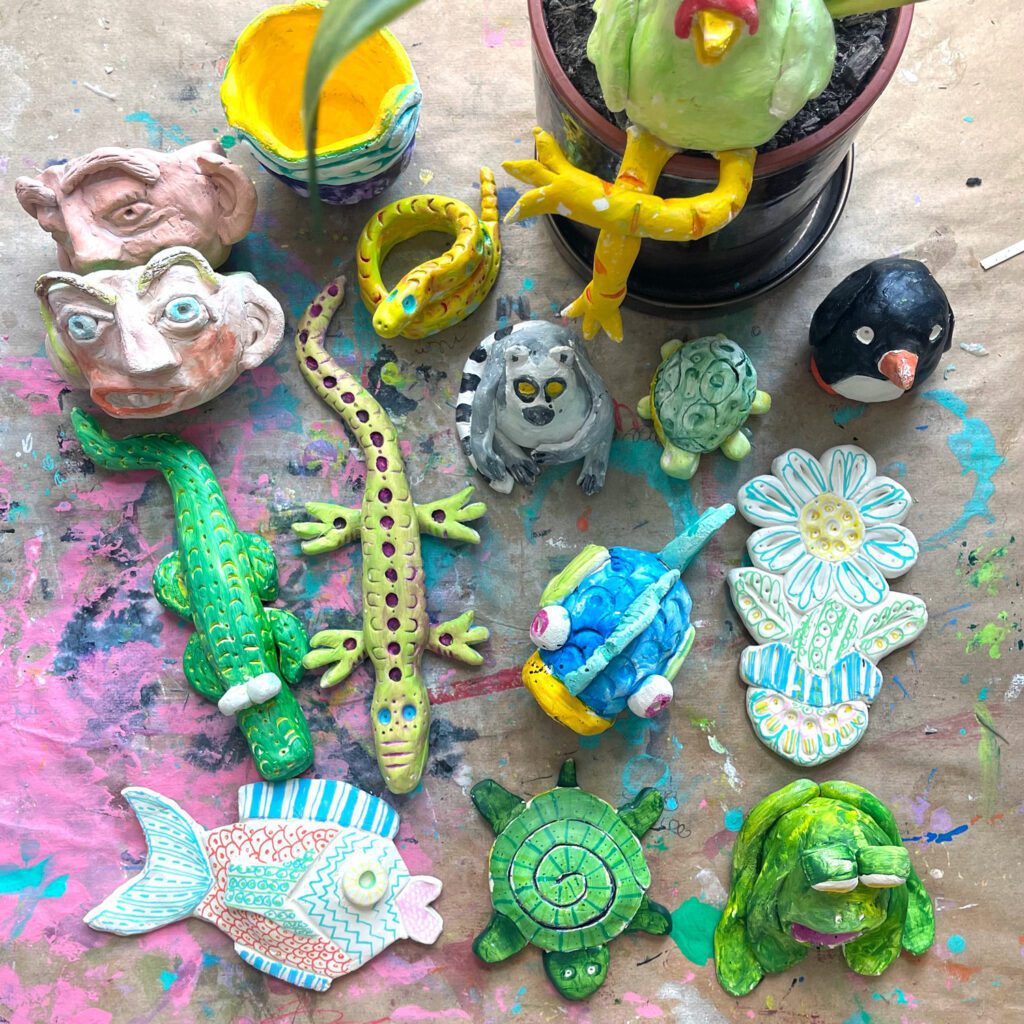
I have spent all summer with my hands in clay. It has been so much fun collaborating with my retired art teacher mom on 14 clay-focused elementary art lessons. Get inspired with these elementary clay project ideas. Check out project highlights and how to hit the easy button by purchasing ready-to-drop-in elementary art lessons and elementary art units. You can check out more elementary highlights here and clay projects here as well.
Kindergarten Clay Projects
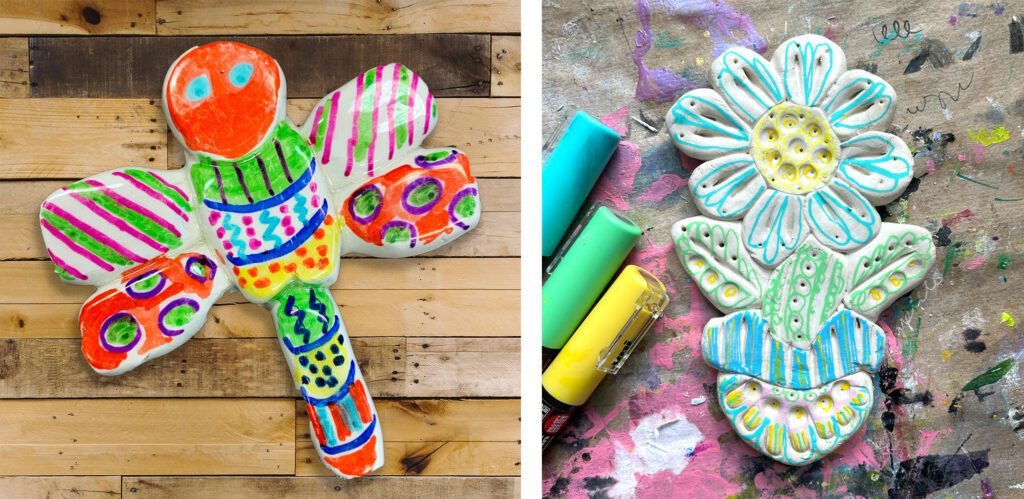
You can’t skip clay with the kinders! It can be daunting to imagine controlling the chaos that is the excitement of clay with 5 and 6 year olds. However, the bonus of working with this grade level is they often come with paras or teacher assistants. You can request help from them on clay days or call in your parent helpers during clay days.
Kindergarten clay is all about learning how to mold and manipulate clay. They don’t quite have the ability to roll thin coils or control thickness. Becuase of that working thick is better. Walk them through rolling spheres of clay, thick coils, and similar. Show them how to flatten them until they are the thickness of their finger or a little thicker than a pencil.
My clay dragonfly and clay flowerpot projects are great for kinders because they work with thicker shapes. To connect the shapes all they do is smear the clay together to create a flat surface. You can image the excitement when their design is flipped over and the shapes are still defined on the other side!
Skip the glazing in kinder. Instead, apply one coat of clear glaze on clay or one coat of Mod Podge on air dry clay. Fire it or let it dry out and use markers to add designs on glaze fired clay and paint pens on air dry clay.
1st Grade Clay Projects
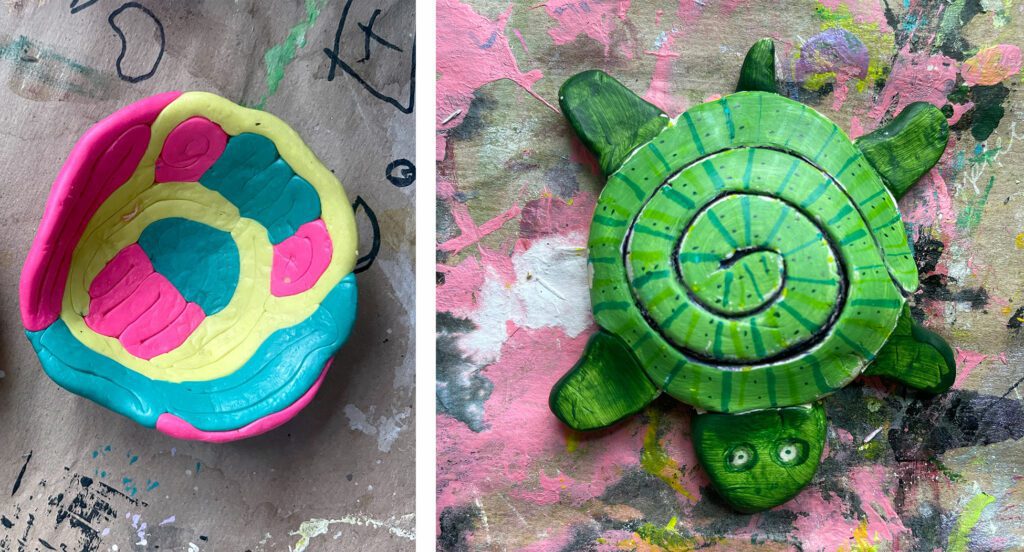
Once students start clay in 1st grade they already have some experience under their belt from kindergarten clay projects. You can build on techniques taught and start working with them on rolling coils.
The focus on rolling coils should be consistent thickness and not going too thin. Remind them to keep the coil about the thickness of their finger. Use these coils to create a fun turtle shell design. All you have to add are legs, a tail, and a head. Or use the coils to create a range of patterns on a flat design, smooth one side, and flip it over to show the designs. Place the design over a ball of papertowels and let it dry to create a bowl.
If you have a kiln introduce students to basic underglaze colors. The benefit of underglaze is they don’t move. Students can paint colors in specific areas and patterns without the risk of the colors melting and blending together like standard glaze. Add a clear coat to make it shiny.
If you don’t have a kiln simply paint air dry clay projects with acrylic paint or decorate with paint pens. You can also use polymer clay for their coil bowls, limiting them to 3 colors each, to create an immediately colorful design.
2nd Grade Clay Lessons
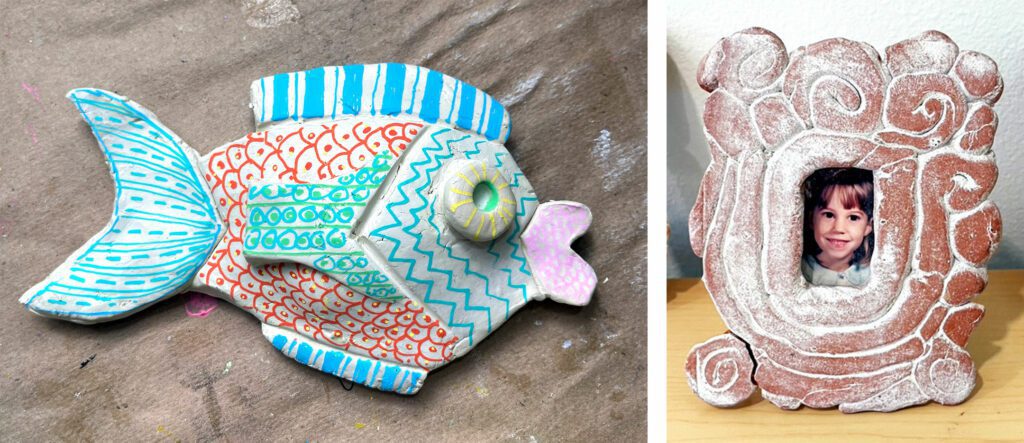
Continue to build on the clay skills in 2nd grade. Hone their coil rolling with a frame design. This is one of my favorite projects because I did it with my Mom when I was in second grade (see the above picture for baby me!) and it’s so personal for the students to take home to their parents or guardians as gifts. It shows students how to use their coils to create pattern designs.
Move to a new technique by teaching slab building. They roll or press clay flat, to the thickness of a pencil. Cut shapes to create a unique fish and decorate it in the style of Oaxaca art. I love how art history makes its way into this project.
One of my favorite non-glazing techniques is watering down white tempera or acrylic paint, painting it on a coil design, and wiping it off with a wet sponge. The white paint emphasizes the low areas of the coil design and creates an antiqued look on the flat areas. Red clay works best with this technique. Polymer clay is also a good air dry alternative for a fun, bold color frame.
Once again skip glazing day with the Oaxaca fish project by adding one coat of clear glaze, firing it, or a coat of Mod Podge. Use Sharpies on clear glaze or paint pens on Mod Podge to create Oaxaca inspired patterns.
3rd Grade Clay Projects
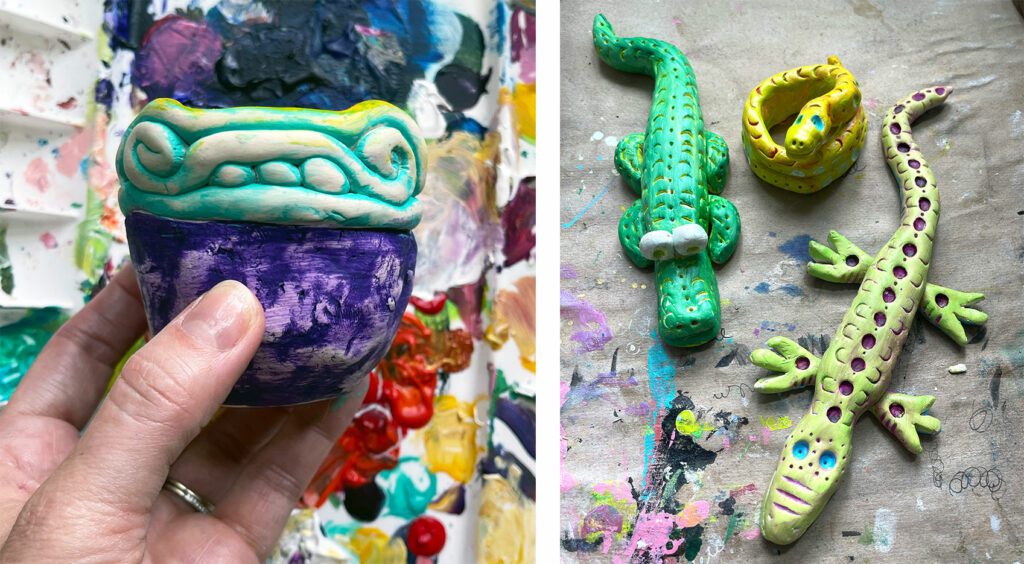
In third grade students being to experiment even more with creating patterns out of clay and adding patterns using surface texture. My coily top pinch pot lesson takes the 2D coil design concept of the coil frame project and turns it 3D by using it to decorate the top of a pinch pot. You can check out the standard clay version here and the air dry clay version here.
I love my lizard, snake, alligator project because it gives students so much creative freedom. They get to choose which animal of the 3 to create. Once they form their animal out of a thick coil they get to experiment with different tools and what pattern to add to their animal. By this point they are coil rolling pros after 3 years of coil focused clay projects.
If using paint to decorate their projects students have even more freedom to choose colors and enhance their patterns. This is a great time to discuss the color wheel and what colors work well together.
4th Grade Clay Lessons
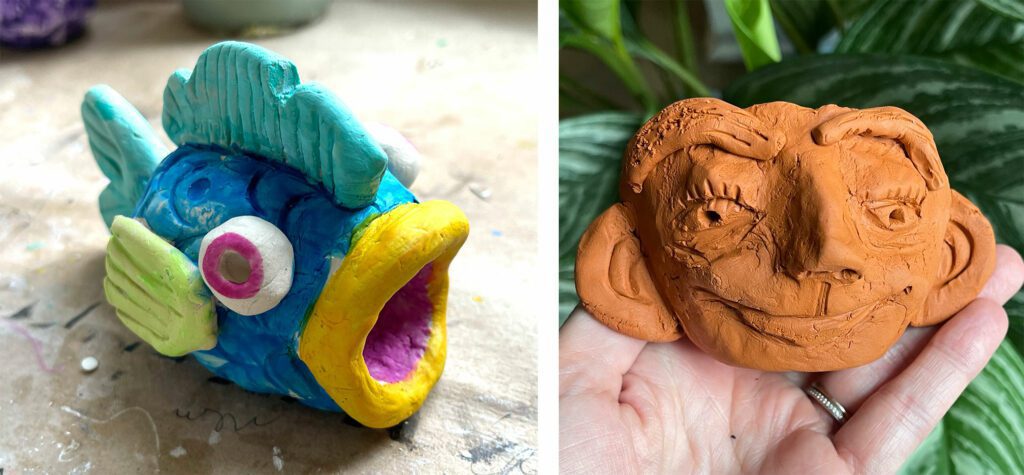
In 4th grade students start to build on their pinch pot base by creating hollow forms using two pinch pots. They start the school year by practicing pinch pots one more time to create a portrait pinch pot. If using standard clay this can be used as a flowerpot pinch pot. I love seeing the pants sticking from the top, acting as the hair for their clay person. If using air dry clay you can us an air plant in it or use it as a pencil holder or similar. This project is also a perfect way to introduce how to sculpt facial features.
After their pinch pot refresher in the second clay lesson of the year students combine two pinch pots together to create a hollow form. They cut into the hollow form to create the mouth of their fish. Next, they add sculptural details and experiment with tools to add patterns. Have students paint their pieces with glaze or paint depending on whether you have kiln or air dry clay.
5th Grade Clay Projects
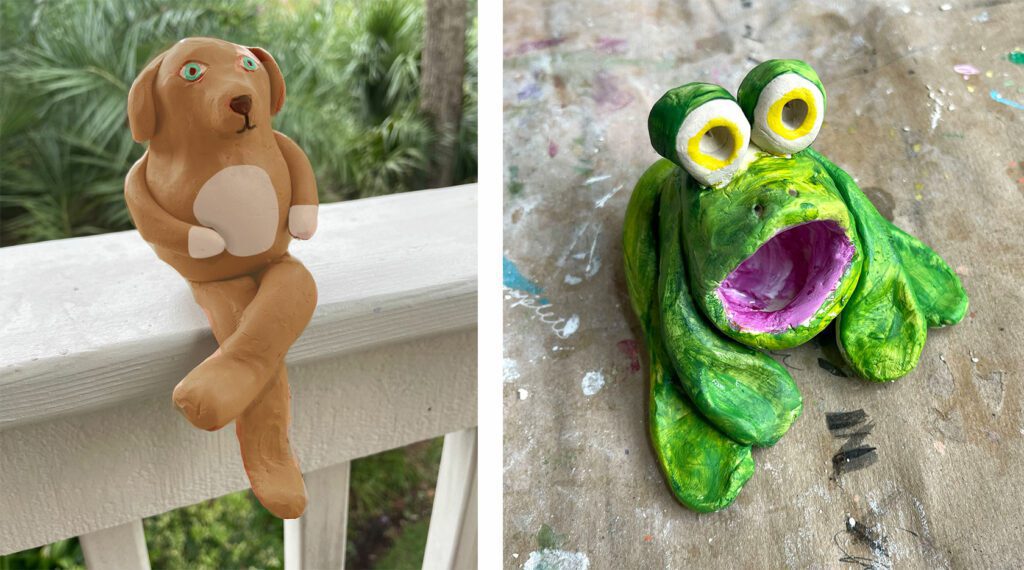
5th grade students continue their clay learning through a focus on hollow forms. They combine two pinch pots to create a body to either turn into a frog or turtle. They can have fun with the open mouth expression and details on the frog or with the shell pattern on the turtle. This is a great way to reintroduce the concept of pinch pots and hollow forms before the next project. Check out the standard clay and air dry clay versions.
For the second project of the year students take a hollow form and add legs and arms to create a shelf sitter. They decide what to do after that. They can turn it into any animal, person, design they want. This gives students create freedom to express themselves through the project. Check out the standard clay and air dry clay versions.
Bonus Clay Lessons
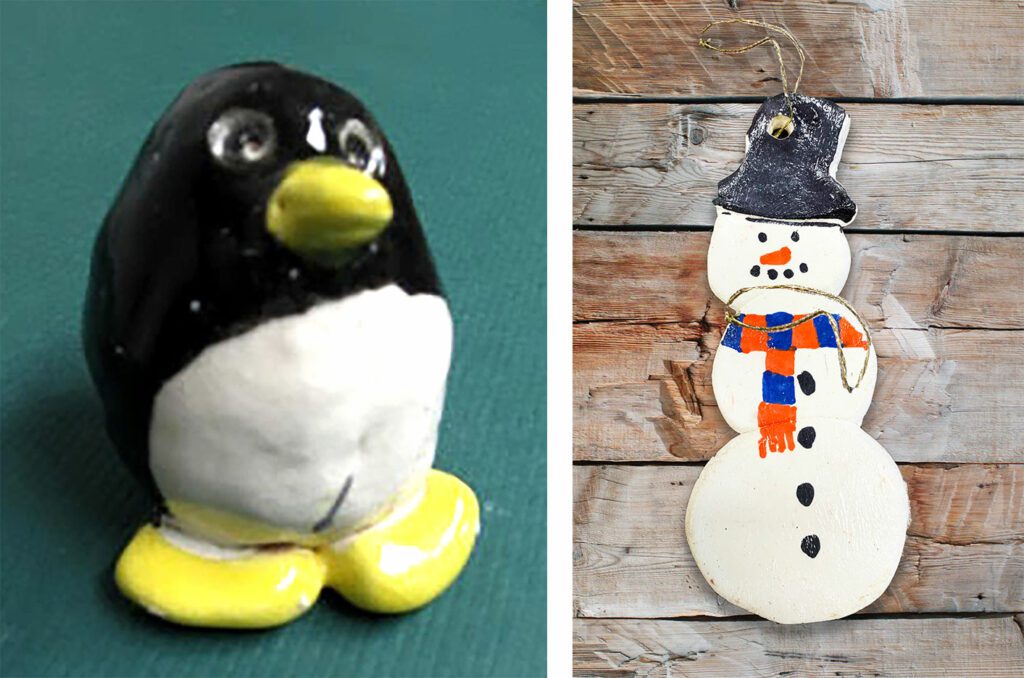
It’s always smart to keep bonus projects on hand just in case. Maybe you find yourself with extra time at the end of the year, maybe a project just isn’t working and you need to shift gears. My go to bonus projects are my clay penguin hollow form and snowman lessons.
The clay penguin hollow form (standard clay and air dry clay) is a simple form to create, with easy details to add, and a basic color palette. It’s a quick, easy project especially for 3rd and up. My snowman project is perfect for any grade level and ideal as a holiday project before winter break. Students make their snowman unique by decorating them using Sharpies or paint pens.
If you love these projects you can get them all for a bundle discount price! I have one packaged for classrooms with kiln access and one packaged for no-kiln classrooms. Teach the basics of clay without the stress of prep! Check out more elementary art lesson ideas here!
Thanks for stopping by, don’t forget to follow me on Instagram and TikTok for weekly visual journal demos and other project ideas. Scubscribe here to get freebies, project tutorials, and more straight to your inbox. Until next time!

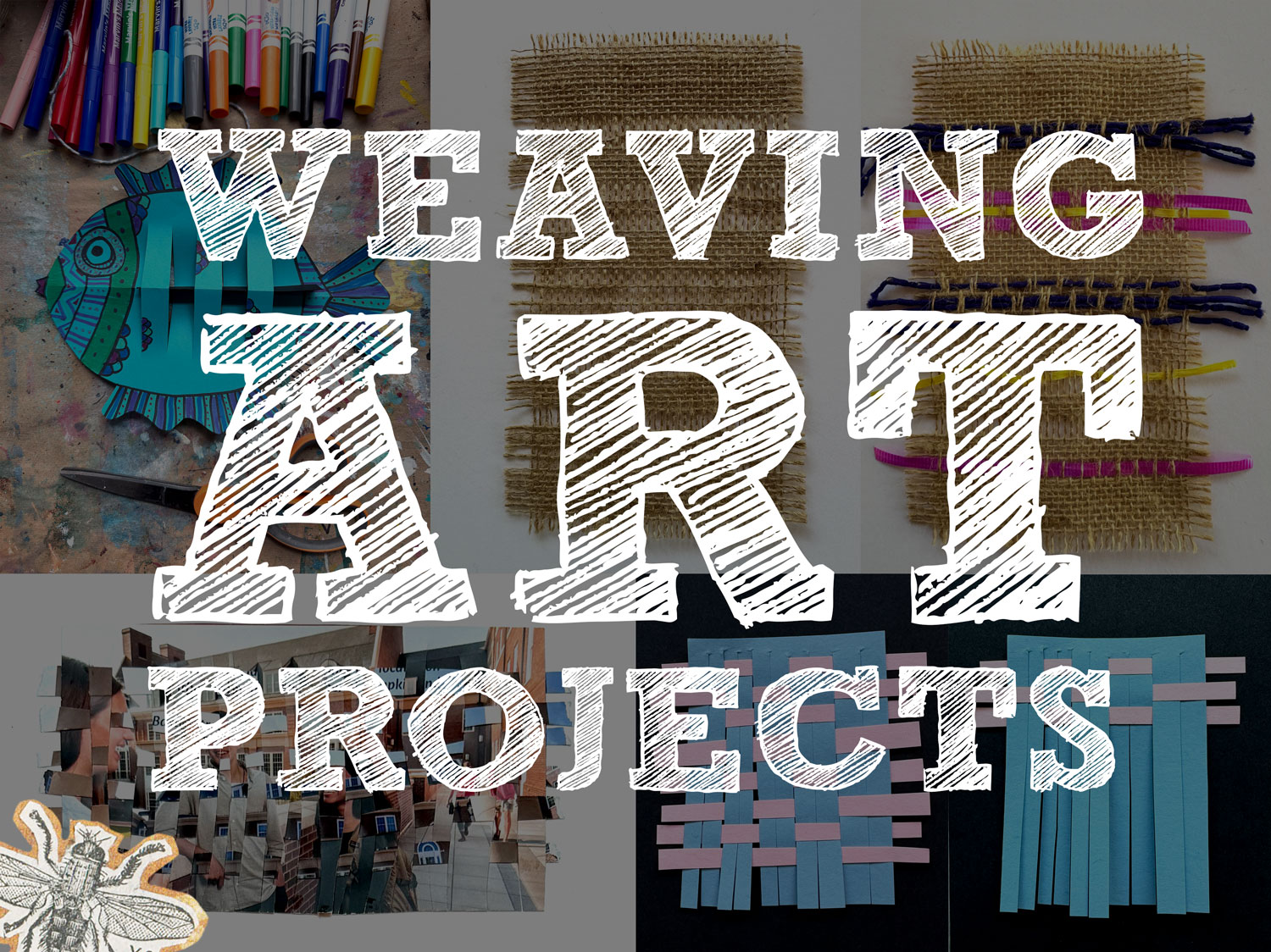

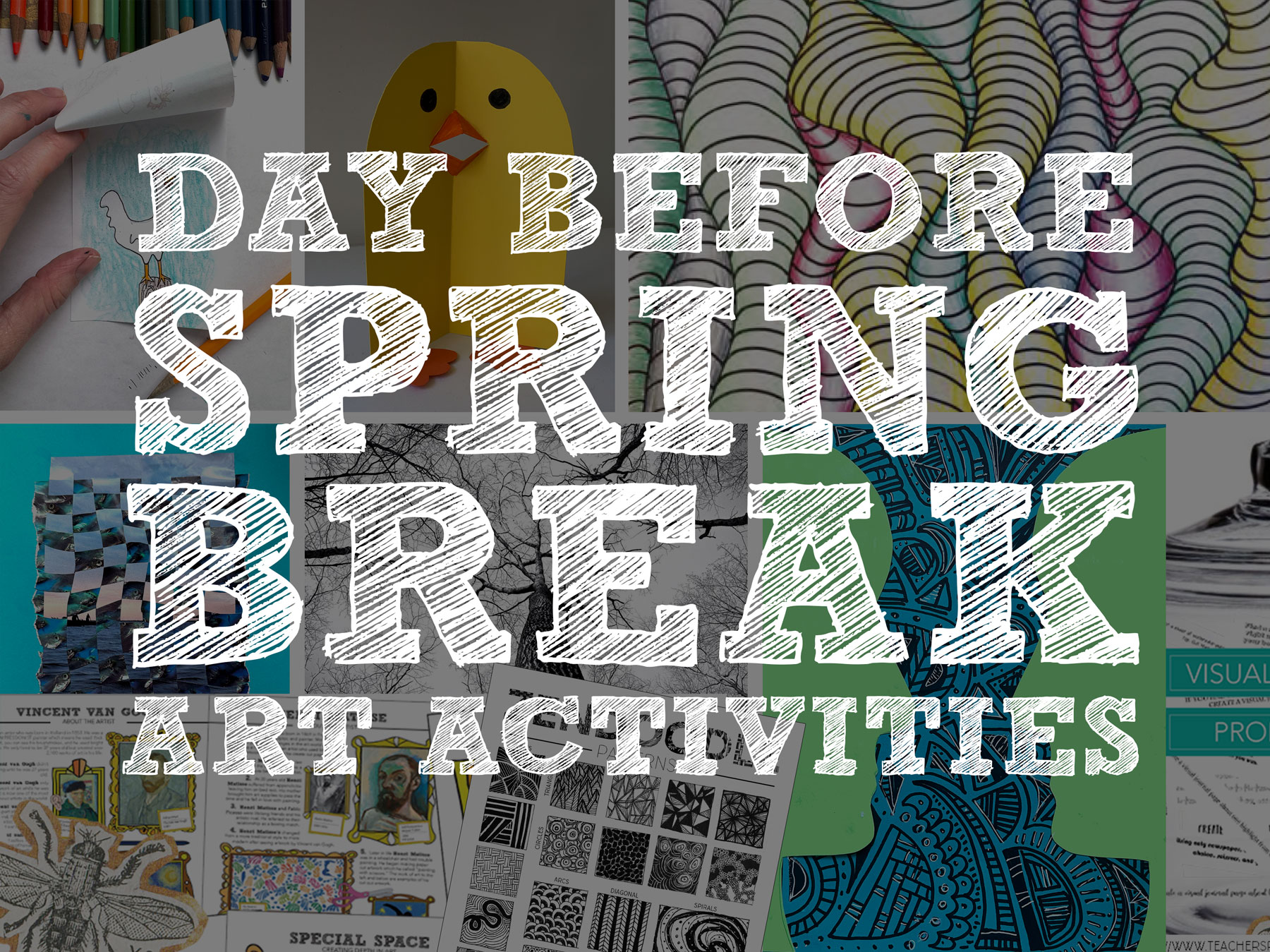


Just wanted to report that I purchased her collection of clay lessons from TPT and they are INCREDIBLY thorough and useful. Thank you! Definitely worth the purchase!
I’m so glad to hear that!! This made my day, thanks for taking the time to share. ❤️
I wanted to report that I am extremely HAPPY with my TPT purchase of clay lessons from Whitney. They are incredibly thorough and useful. Thank you!
Thanks so much for taking the time to make this comment! I am so glad you are happy with the pack! Good luck teaching this year!!